Fungus gnats, scientifically known as families Sciaridae and Fungivoridae, are tiny, mosquito-like insects notorious for infesting houseplants. Measuring just 2.5 millimeters in length, they are recognized by their black or dark gray color, long legs, and segmented antennae. Their life cycle is typically around four weeks, with the female gnats laying up to 300 eggs at a time in damp soil rich in organic material, according to the University of California Statewide Integrated Pest Management Program.
The primary concern related to these creatures is not the harmless adults but their larvae, which can inflict significant damage on houseplants. They feed on organic matter, roots, and leaf tissues, which can hinder plant growth and, in severe cases, cause the plant’s demise.
This comprehensive guide sheds light on the essential aspects of fungus gnats, from identifying these pesky critters to understanding the root causes of their infestation. Delve into proven preventive measures and effective methods to get rid of them, followed by necessary post-infestation care for your precious houseplants. Uncover common misconceptions about fungus gnats to stay informed and well-equipped to safeguard your green companions from future invasions. Take your time and navigate through this plethora of knowledge to secure a gnat-free, healthy environment for your houseplants.
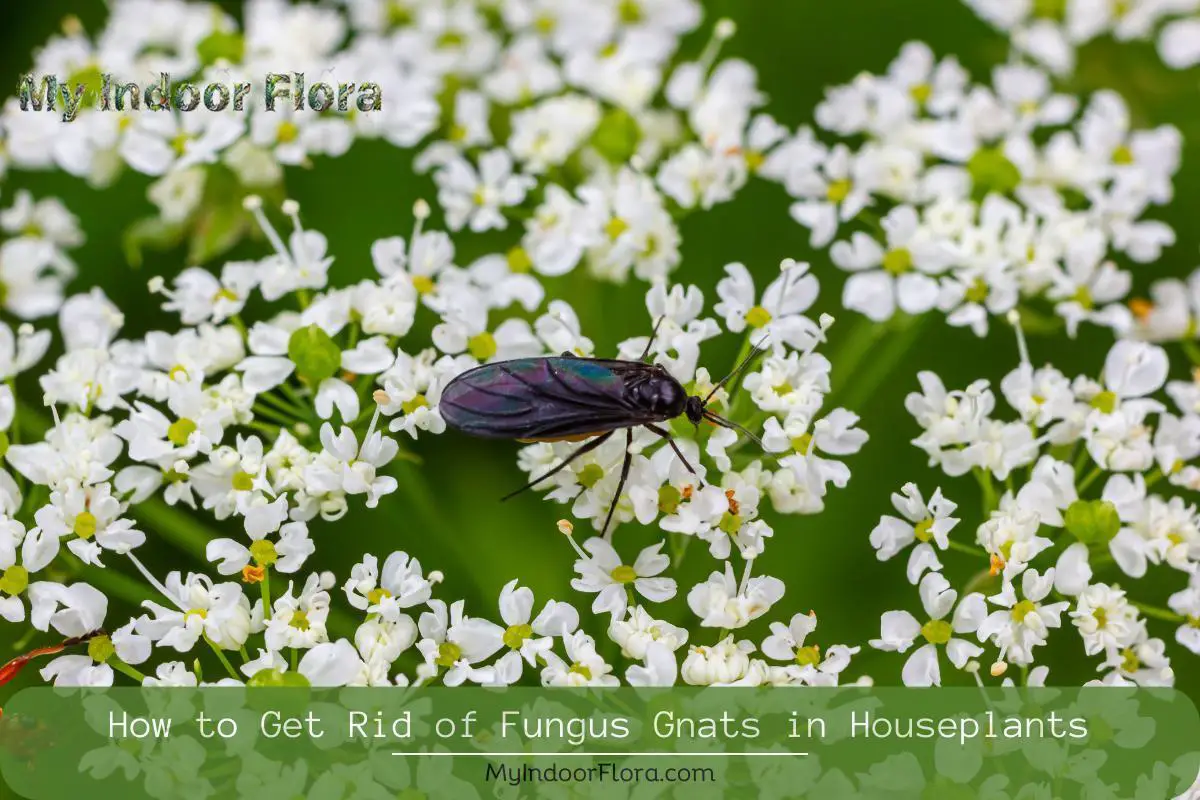
Identifying Fungus Gnats in Houseplants
Fungus gnats are small, delicate, mosquito-like insects. They are attracted to damp, rich soils where they lay their eggs and feed on organic matter. Adult gnats are harmless to plants, but their larvae can cause significant damage, particularly to young plants and seedlings.
Fungus Gnat Characteristics
Fungus gnats, scientifically known as members of the Sciaridae family, are tiny creatures that have a knack for wreaking havoc on your precious indoor plants. On average, they measure between 1/16 to 1/8 inch in length, making them quite small and often hard to spot with the naked eye.
Color-wise, fungus gnats typically flaunt a dark black or gray hue. They are characterized by their long, slender legs and thin antennae. One of the most distinctive features of fungus gnats is a unique Y-shaped vein found on their wings. This vein is a vital identification point but requires a microscope or a magnifying glass to spot due to their diminutive size.
Adult fungus gnats might seem harmless given their short lifespan, approximately seven to ten days. However, female gnats can lay up to 300 eggs in this short period, leading to rapid infestation if not managed promptly.
Signs of Fungus Gnats Presence in Houseplants
Identifying a fungus gnat infestation early is critical to preventing severe damage to your houseplants. Here are the primary signs:
- Adult Gnats: Tiny flies found crawling on the soil or flying around your plant. They are particularly active during the day and may swarm when the plant is watered or disturbed.
- Gnat Larvae: These can sometimes be seen on the soil surface, especially if you shift the top layer of soil slightly. Larvae are transparent, making them tough to spot. They have a distinct shiny black head and a whitish to clear body.
- Sudden poor plant health: Yellowing leaves, reduced vigor, and wilting are often signs of a potential infestation. Gnat larvae feed on plant roots, disrupting nutrient absorption.
- Visible webs: In some cases, a delicate web may form on the surface of the soil, similar to a spider’s web.
- Fungus Gnat Traps: Trapping adult gnats using sticky traps is a practical method to confirm their presence.
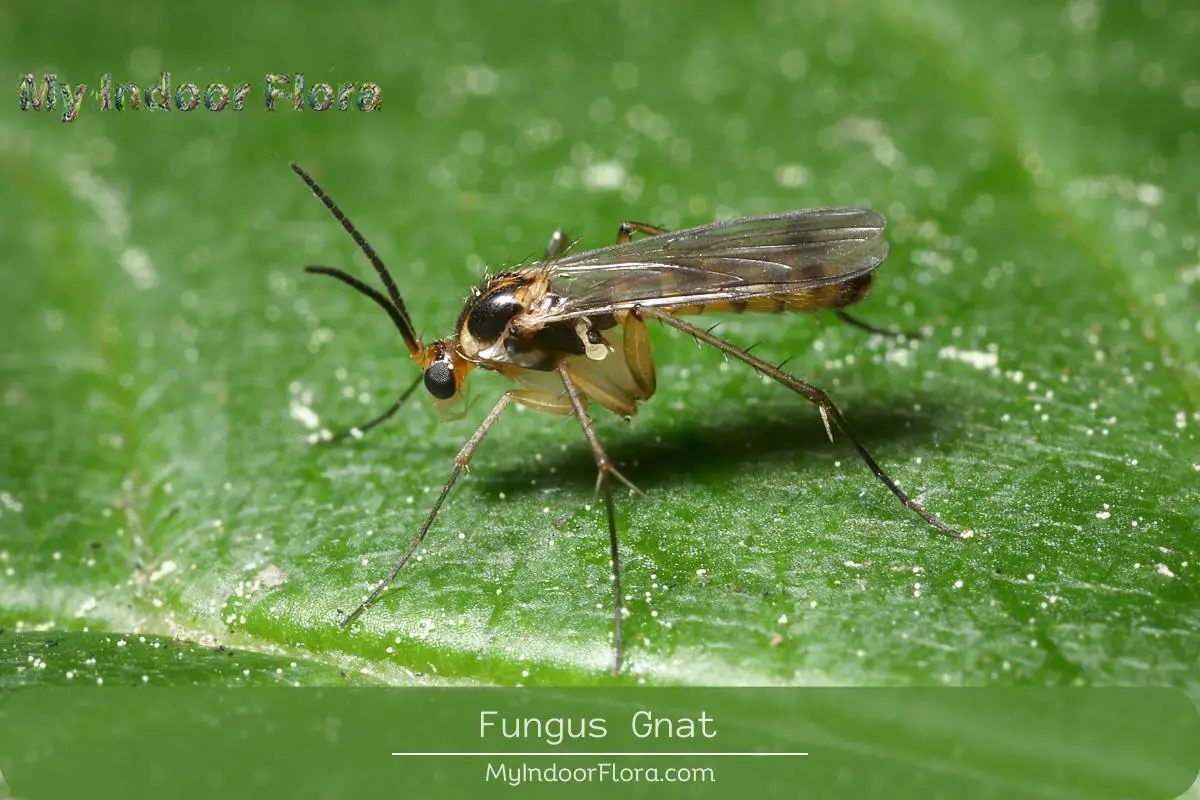
Damage Caused by Fungus Gnats to Houseplants
It’s important to understand that while adult fungus gnats are more visible and annoying, it’s the larvae that cause the actual damage. Larvae primarily feed on organic matter, fungi, algae, and even the roots of plants. They are particularly fond of the tender root hairs and can feed on the plant’s root system. This disrupts the plant’s ability to absorb water and essential nutrients from the soil, causing symptoms like yellowing or wilting leaves, poor growth, stunted development, and even plant death in severe cases.
Differentiating Fungus Gnats from Other Common Pests
Misidentification of pests can lead to ineffective treatment methods. Fungus gnats are often mistaken for fruit flies due to their small size and similar appearance. However, while fruit flies are attracted to overripe fruits, fungus gnats are drawn to moist soil and organic matter. Another common look-alike is the drain fly, which can be distinguished by their fuzzy, moth-like appearance.
Causes of Fungus Gnat Infestation
Identifying the root cause of a fungus gnat infestation helps in implementing effective control strategies and preventative measures. Here’s an in-depth look at the main culprits.
Overwatering and Wet Soil Conditions
Overwatering is the most common reason for fungus gnat infestations. Fungus gnats thrive in damp conditions, with their larvae requiring a moist environment to develop and survive. Consistently wet soil in houseplants creates a perfect breeding ground for these pests. Dr. Elizabeth Lamb from the New York State Integrated Pest Management mentions, “The number one houseplant pest is fungus gnats, and they’re usually a problem because people overwater their plants.”
Presence of Organic Matter and Decomposing Plant Material
As their name suggests, fungus gnats feed on fungi and other organic material, particularly decomposing plant matter. The presence of these in your houseplants’ soil can attract fungus gnats. Moreover, potting soils rich in organic matter, like peat moss, are highly susceptible to fungus gnat infestations.
Lack of Proper Plant Maintenance
Healthy plants are less likely to suffer severe infestations. However, lack of regular maintenance can allow an infestation to take hold without you noticing. It’s essential to regularly inspect your plants and their growing conditions to catch any potential issues early.
Poor Ventilation
Poorly ventilated or stagnant air can create a favorable environment for fungus gnats. These pests thrive in damp conditions, and poor ventilation can contribute to excess humidity and moisture.
Unsuitable Temperature
Fungus gnats thrive in temperatures between 70 and 80 degrees Fahrenheit. If your indoor temperature falls within this range, it could be a contributing factor to an infestation.
Using Non-sterile Potting Soil
Non-sterile potting soil can sometimes harbor fungus gnat eggs or larvae. Always use a sterile potting mix when potting your plants to prevent introducing these pests.
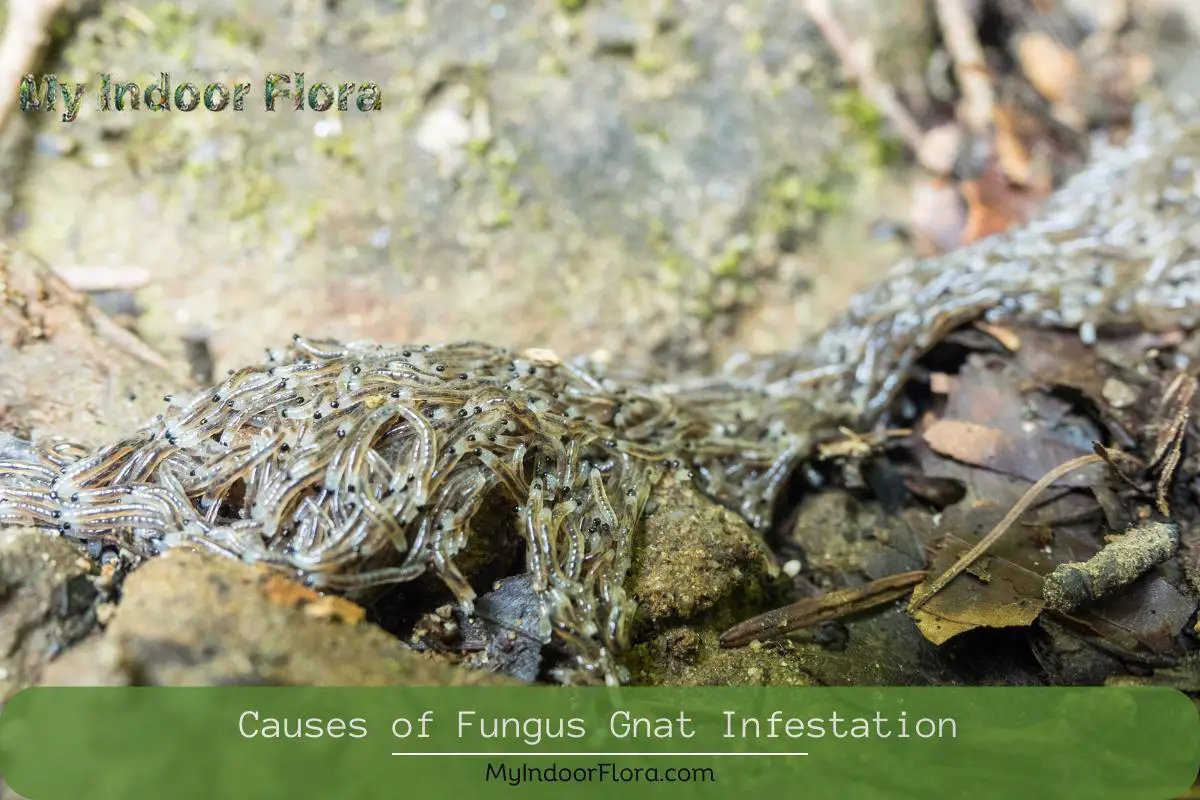
By paying close attention to these signs and causes, you can catch a fungus gnat infestation early and save your beloved houseplants from these damaging pests.
Preventive Measures Against Fungus Gnats
Prevention is always better than cure, and this holds particularly true when it comes to controlling pests like fungus gnats. Below are some robust strategies that can help keep your houseplants gnat-free.
Regularly Monitor Your Plants
The first line of defense is keen observation. Make it a habit to inspect your houseplants regularly for signs of pests. The earlier you identify an infestation, the easier it will be to manage and control. Checking the soil’s top layer for larvae or keeping an eye out for adult gnats can help catch an infestation in its early stages.
Proper Watering Practices
Overwatering is a leading cause of fungus gnat infestations. Make sure you’re not keeping the soil too damp, as gnats are attracted to wet soil conditions. The majority of houseplants prefer their soil to dry out somewhat between waterings. “One of the most practical ways to avoid gnats is to let the soil dry out between watering,” says Amy Enfield, a horticulturist with Miracle-Gro. A moisture meter can be a handy tool in ensuring your plants receive the correct amount of water.
Use Sterile Potting Soil
Always use a high-quality, sterile potting mix for your plants. Sterile soil is free from pests, diseases, and weed seeds, minimizing the risk of introducing gnats to your plants.
Good Ventilation
Ensure that your houseplants are in a well-ventilated area. Good air circulation can help keep the soil surface dry and less inviting for fungus gnats.
Temperature Control
If possible, maintain the temperature in your home below 70 degrees Fahrenheit. Remember, fungus gnats thrive in temperatures between 70 and 80 degrees Fahrenheit, so keeping your home slightly cooler can help deter these pests.
Cleanliness
Keep the area around your plants clean. Remove dead leaves or other plant debris promptly, as these can attract gnats and provide a food source for larvae.
Quarantine New Plants
When introducing new plants to your home, it’s a good idea to quarantine them for a few weeks to ensure they are not carrying pests. This can prevent the spread of any potential infestation to your other plants.
Methods to Get Rid of Fungus Gnats
If you find yourself facing a gnat infestation, don’t despair. There are several effective strategies to get rid of these pests and protect your houseplants.
Using Yellow Sticky Traps
Yellow sticky traps are an effective way to catch adult fungus gnats. These traps can be inserted into the plant’s soil or hung nearby. As adults are attracted to the color yellow, they land on the sticky surface and are trapped. Regularly changing these traps can help reduce the adult population significantly.
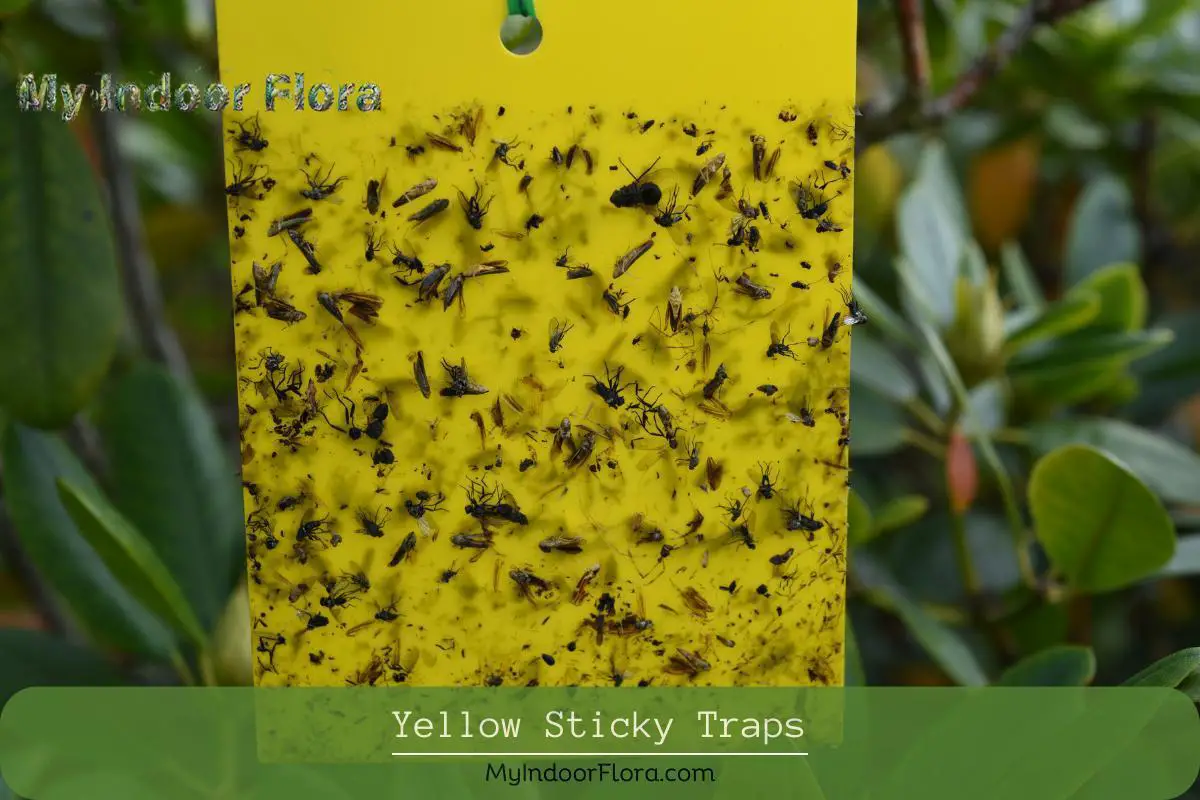
Biological Controls
Biological controls, such as the use of beneficial nematodes (Steinernema feltiae), can be an effective solution for serious infestations. These microscopic worms release bacteria that are toxic to fungus gnat larvae. They can be mixed with water and applied to the soil.
Bacillus thuringiensis (Bt) is another biological control. This bacteria is harmless to humans and pets but lethal to gnat larvae. The Bt strain var. israelensis (Bti) is used against fungus gnats and can be applied as a soil drench.
Botanical Insecticides
For more severe infestations, botanical insecticides may be necessary. Products containing ingredients like pyrethrin can be effective in controlling adult gnats.
Diatomaceous Earth
Diatomaceous earth (DE) is a non-toxic powder made up of fossilized aquatic organisms. It can be sprinkled on the soil’s surface where it kills fungus gnat larvae by causing them to dehydrate.
Hydrogen Peroxide Soil Drench
A solution of hydrogen peroxide and water can be used as a soil drench to kill fungus gnat larvae. The usual recommendation is to mix one part 3% hydrogen peroxide with four parts water. Be cautious when using this method, as too high a concentration of hydrogen peroxide can harm your plants.
Neem Oil
Neem oil is a natural pesticide that can help control fungus gnats. It can be mixed with water and applied as a soil drench, killing larvae on contact. It also helps repel adult gnats.
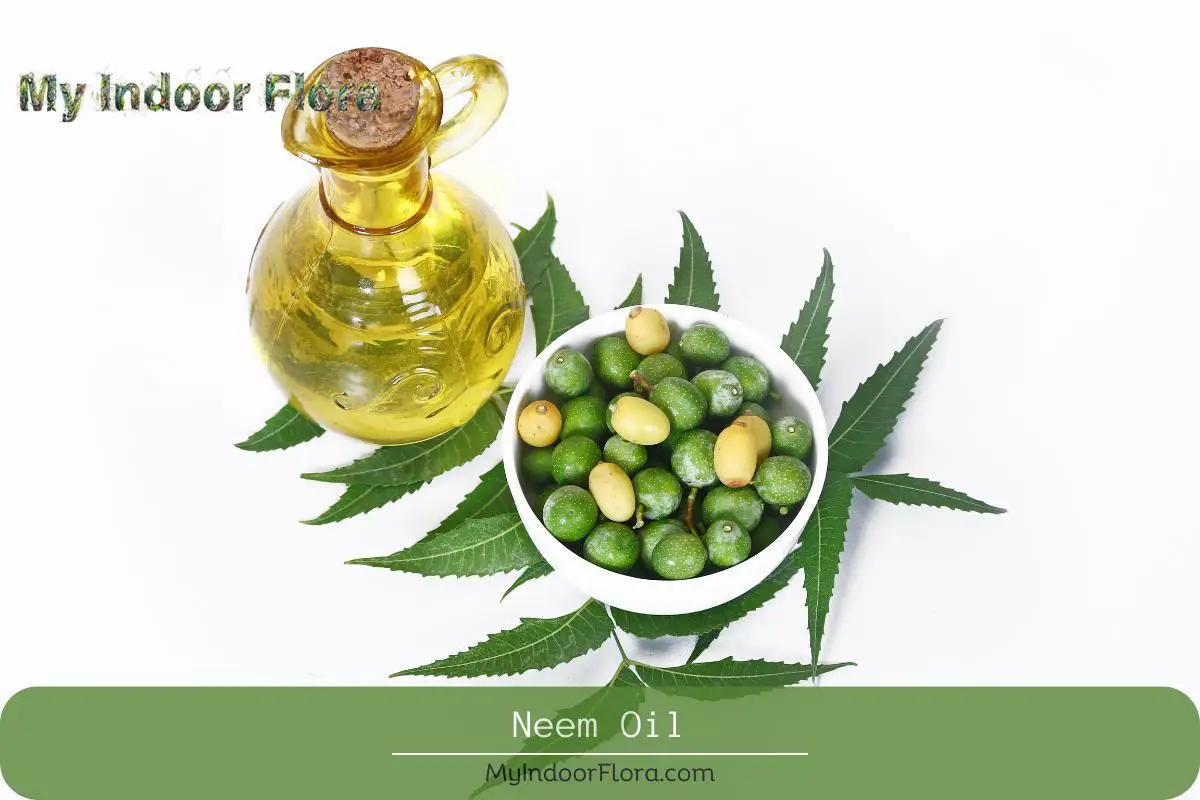
Cultural Controls
Lastly, making changes to your plant care practices can help control an infestation. This can include watering less frequently, improving ventilation, and removing any decaying plant material promptly.
By employing a combination of these prevention and control methods, you can keep your houseplants healthy and free from fungus gnats.
Post-Infestation Care for Houseplants
After successfully ridding your houseplants of fungus gnats, there are some critical steps to take to help your plants recover and prevent future infestations.
Reassessing Your Watering Schedule
Too much water is a prime attraction for fungus gnats. Overwatering isn’t only detrimental for plant health; it’s also an open invitation for pests like these. To give your plants the best chance at recovery, reassess your watering schedule. Horticulturist David Trinklein from the University of Missouri’s Division of Plant Sciences suggests, “Plants should be watered thoroughly, and then not watered again until the top one to two inches of soil feels dry to the touch.”
Inspect Roots and Repot if Necessary
After a fungus gnat infestation, your plant’s roots may have suffered significant damage. Inspecting the roots can provide insights into the plant’s health. If the roots appear mushy, brown, or have an unpleasant smell, it might be necessary to trim away the damaged parts and repot the plant in fresh, sterile soil.
Provide Appropriate Nutrients
Fungus gnat larvae feed on roots, possibly leaving your plant deficient in essential nutrients. Consider using a balanced, slow-release fertilizer to replenish these nutrients and encourage plant recovery. Always follow the package instructions when applying any type of fertilizer.
Monitor Plant Health
Keep a close eye on your plants in the weeks following treatment for an infestation. Look for signs of recovery such as new growth and keep an eye out for signs of recurring infestations. Regular monitoring helps catch any potential problems early.
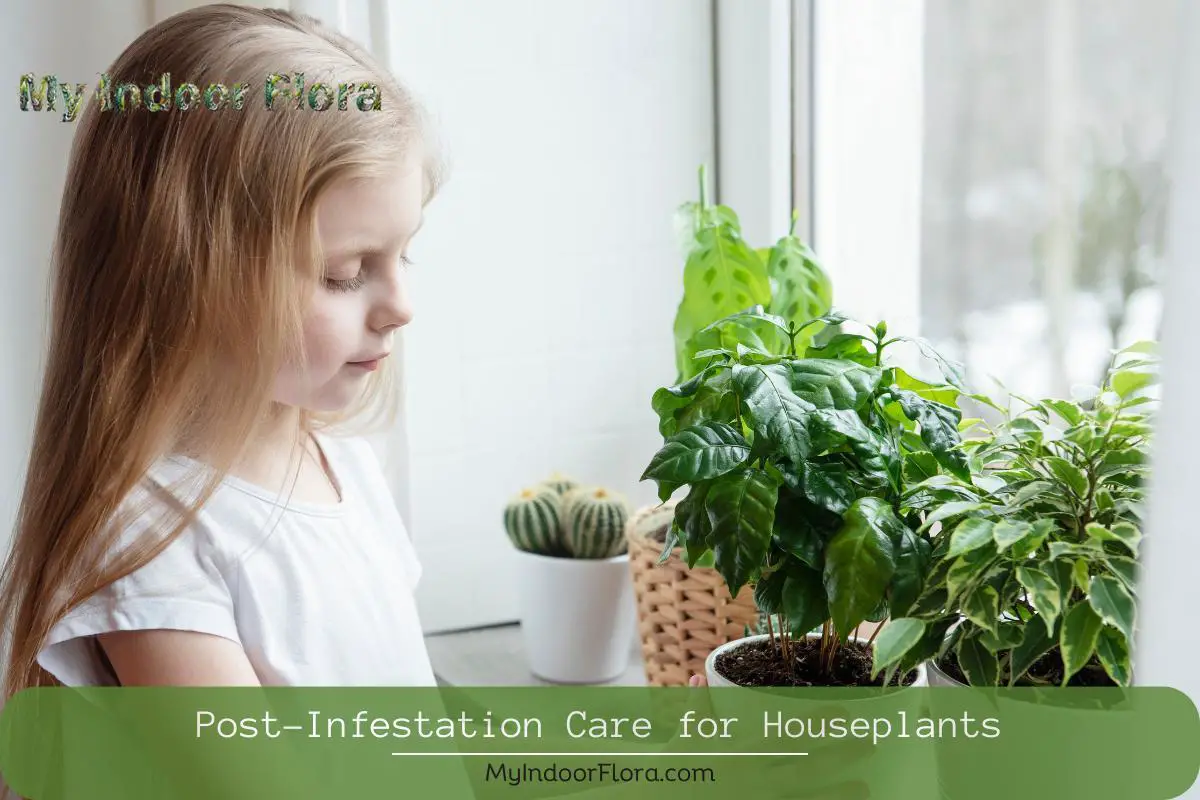
Common Misconceptions About Fungus Gnats
As with any common pest, there are numerous misconceptions about fungus gnats that can lead to ineffective control measures and misunderstanding about their biology and behavior.
Misconception 1: Fungus Gnats and Fruit Flies are the Same
While they might look similar to the untrained eye, fungus gnats and fruit flies are distinct species with different habits. Fungus gnats are usually associated with overwatered plants and wet soil, while fruit flies are attracted to ripening and fermenting fruits and vegetables.
Misconception 2: Adult Fungus Gnats Cause Plant Damage
While adult fungus gnats can be a nuisance, it’s the larvae that cause damage to your plants. Adult gnats live only about a week and do not feed on plants but rather on fungi and organic matter. The larvae, on the other hand, feed on plant roots and organic matter in soil.
Misconception 3: Fungus Gnats Only Infest Unhealthy Plants
Even the healthiest of plants can fall victim to a fungus gnat infestation if conditions are favorable. While maintaining plant health is an excellent preventative measure, it is not a foolproof guarantee against an infestation.
Misconception 4: Fungus Gnats Can Bite or Sting Humans
Fungus gnats are harmless to humans and pets. They cannot bite or sting. Their presence can be irritating and unsettling, but they pose no direct risk to people or animals in the home.
By providing the right care after an infestation and understanding the realities of fungus gnats, you’ll be better equipped to protect your houseplants from these common pests.
